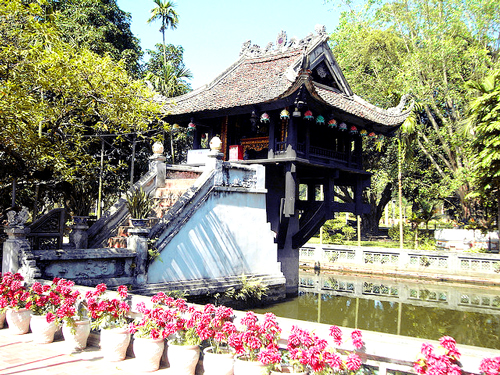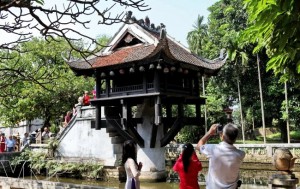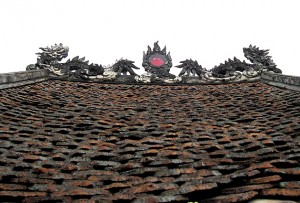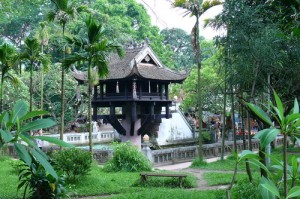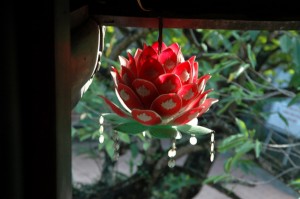With great values of history, humanity and Buddhism thought, One Pillar pagoda was officially recognized as “The Pagoda with the Most Unique Architecture in Asia” by the Asia Record Organization, becoming a must-see destination in the itinerary of any tourists to Hanoi.
Related: Explore Hanoi: City’s Cultural Sites
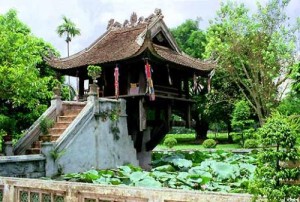
One Pillar pagoda is not spectacular but distinctive and unique in terms of architecture. The pagoda was built on a single stone pillar and extremely solid. Lotus, the flower representing delicate beauty is regarded as symbol of pagoda. It is also the symbol of intelligence, permanence and release through cognition to reach nirvana.
Experiencing decades, One Pillar pagoda was repaired and restored many times in Tran, Post-Le, Nguyen dynasties. In 1954, French colonists used explosives to destroy the pagoda before withdrawing from Vietnam. In 1955, Ministry of Culture had One Pillar pagoda rebuilt by Nguyen Ba Lang architecture.
One Pillar pagoda’s architecture is totally different from any pagodas else. In spite of small size, the pagoda contains itself a significant human philosophy. The outer square-shaped circle represents Yin while the round pillar represents Yang. The Yin is inside Yang, the Yang is included in Yin. This is law of circulation of universe.
After thousand years with changes of history, One Pillar pagoda still retains the spirit of ancient Thang Long. Although today’s one Pillar pagoda was not designed as lotus petals on stone pillar in the past, its place also shows the image of a lotus flower in the middle of a pond.
One Pillar pagoda is also called “Lien Hoa Dai” because it looks like a lotus flower emerging from the water’s surface. The pagoda was made of wood in square shape with each side of 3m and a curved roof on a single stone pillar 1.25 m in diameter. The stone pillar includes two blocks which are connected together skillfully and look like one. This stone pillar is approximately 4m high (excluding the underground section). The upper part of the pillar has 8 wooden petals which are similar to lotus petals. The pagoda’s roof is decorated with dragons flanking the moon. In the pagoda, the bodhisattva Avalokiteshvara is placed on a wooden and red-lacquered Buddha’s throne at the highest position. One Pillar pagoda contains a great value of religious culture that opposite to its small size to ensure the architecture of a lotus.
One Pillar pagoda was built in the middle of lotus pond with each side of 20 m and surrounded by short walls. At the back yard of the pagoda planted a styrax, the gift from India of President R.Prasat for Uncle Ho in February 1958.
The pagoda is the pride of Vietnamese race, Vietnam’s Buddhism, ancient Thang Long people as well as of today Hanoi capital’s people, said Most Venerable Thich Tam Kien (abbot of Dien Huu-One Pillar pagoda). Together with Ho Chi Minh mausoleum and Ho Chi Minh museum, One Pillar pagoda form a significant historical relics complex in Hanoi, becoming the important destination of historical researchers, domestic and foreign visitors.
